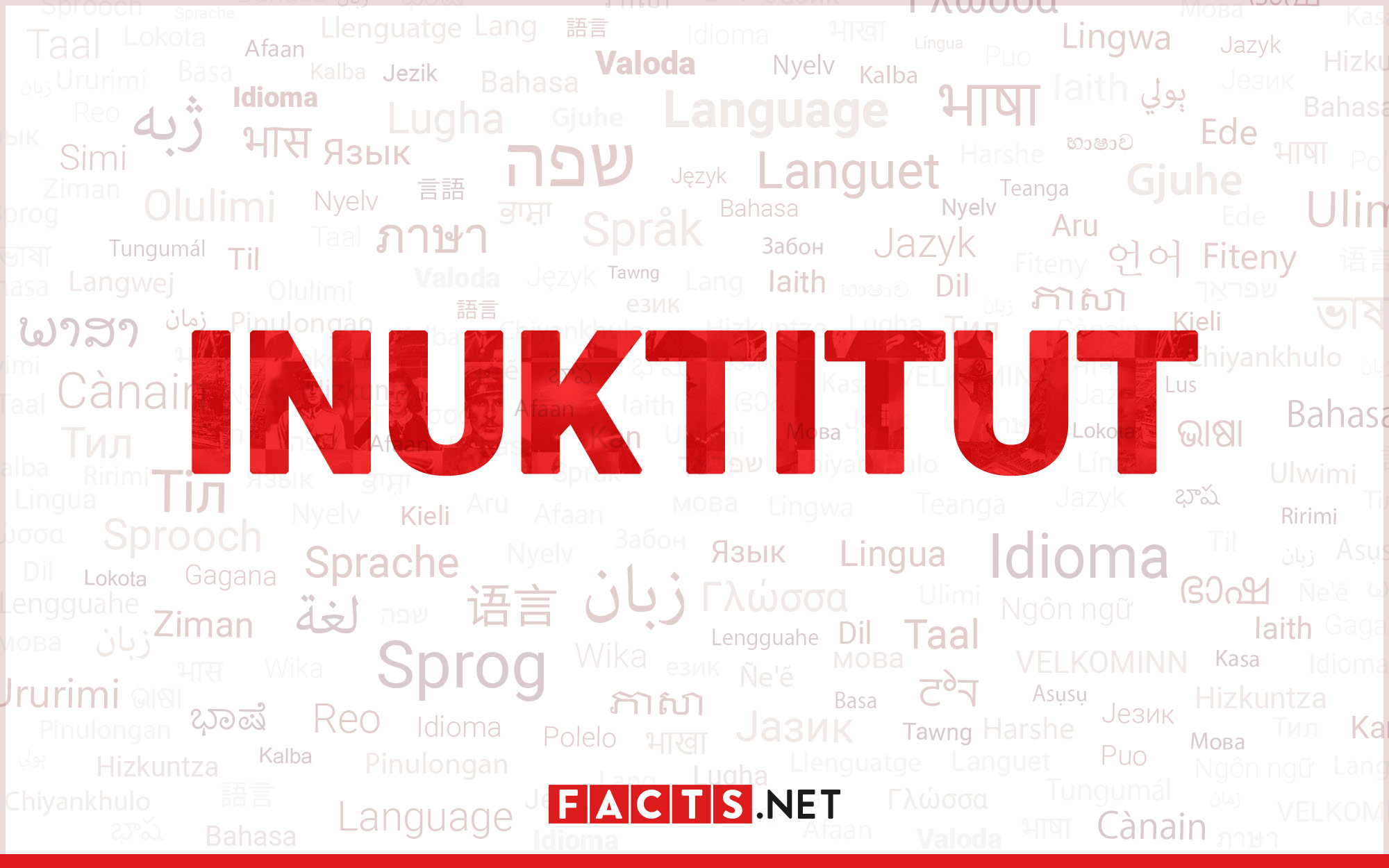
Inuktitut, the language spoken by the indigenous Inuit people of Canada, is a fascinating and enigmatic language with a rich cultural heritage. With a unique linguistic structure and a deep connection to the Arctic environment, Inuktitut offers a glimpse into the rich history and way of life of the Inuit community.
In this article, we will explore 14 intriguing facts about Inuktitut that will not only deepen your understanding of this remarkable language but also shed light on the resilience and adaptability of the Inuit people. From its complex grammar and writing system to its vital role in preserving cultural identity, Inuktitut is truly a language worth celebrating and appreciating.
Key Takeaways:
- Inuktitut, the language of the Inuit people, is unique and complex, with multiple dialects and a rich oral tradition. It’s an endangered language, but efforts are being made to preserve and promote it.
- Inuktitut incorporates complex inflectional endings and has a fascinating cultural significance. It’s deeply intertwined with the Inuit culture and is taught in schools to preserve its heritage.
Inuktitut is an Eskimo-Aleut language.
Inuktitut belongs to the Eskimo-Aleut language family, which includes other indigenous languages spoken across parts of Alaska, Canada, Greenland, and Siberia.
It has a polysynthetic nature.
Inuktitut is highly polysynthetic, meaning that words can be created by combining several roots and affixes into a single word. This allows for the expression of complex ideas within a single word.
Inuktitut has a rich oral tradition.
The Inuit people have a strong oral tradition, and Inuktitut has been passed down through generations by storytelling and spoken communication.
It has multiple dialects.
There are several dialects of Inuktitut, with slight variations in vocabulary, pronunciation, and grammar. These dialects are spoken across different regions of the Arctic.
Inuktitut has a unique writing system.
Inuktitut is traditionally written using a syllabary called the Inuktitut script, which was developed by Christian missionaries in the 19th century.
It incorporates complex inflectional endings.
Inuktitut utilizes a system of complex inflectional endings, which are added to words to indicate tense, mood, aspect, and other grammatical features.
Inuktitut has fascinating cultural terms.
Inuktitut includes a vast array of cultural terms that are uniquely tied to the Inuit way of life, such as words related to hunting, ice conditions, and traditional practices.
It is an official language in Nunavut.
Inuktitut holds official language status in the Canadian territory of Nunavut, alongside English and French.
Inuktitut has a complex system of noun incorporation.
Noun incorporation is a grammatical feature in Inuktitut where nouns are fused with verbs to form a single word, allowing for concise expression of ideas.
It is an endangered language.
Despite its cultural significance, Inuktitut is classified as an endangered language due to declining numbers of fluent speakers, language shift towards English, and the impact of colonization.
Inuktitut has unique sound patterns.
The phonology of Inuktitut includes sounds such as uvular stops, voiceless alveolar lateral fricatives, and other distinctive features not commonly found in other languages.
Inuktitut place names tell stories.
Place names in Inuktitut often have rich cultural and historical significance, reflecting traditional stories, landmarks, and geographic features of the Arctic landscape.
Inuktitut is taught in schools.
Efforts are being made to preserve and promote Inuktitut through language revitalization programs and its inclusion in the curriculum of schools in Inuit communities.
It is a source of cultural identity.
Inuktitut is deeply intertwined with the Inuit culture, serving as a crucial element of their cultural heritage and identity.
These 14 enigmatic facts about Inuktitut only scratch the surface of the richness and complexity of this fascinating language. Exploring Inuktitut not only provides insight into the Inuit people’s culture and history but also highlights the importance of preserving endangered languages for future generations.
Conclusion
Inuktitut is an incredibly fascinating and enigmatic language, rich with a deep cultural history and unique linguistic features. From its complex grammar to its distinct writing system, Inuktitut offers a glimpse into the rich heritage of the Inuit people.
Learning about Inuktitut not only expands our knowledge of different languages but also opens doors to understanding a unique and resilient culture. Whether it’s the polysynthetic nature of the language or the way it encompasses the essence of the Arctic environment, studying Inuktitut can be a captivating journey into a world steeped in tradition and resilience.
So, the next time you come across Inuktitut, take a moment to appreciate the beauty and complexity embedded within this remarkable language.
FAQs
1. What is Inuktitut?
Inuktitut is an indigenous language spoken by the Inuit people in Canada and parts of Greenland.
2. Is Inuktitut a difficult language to learn?
Inuktitut has a complex grammar and unique linguistic features, which can make it challenging for non-native speakers. However, with dedication and practice, it is possible to grasp the basics and have conversational proficiency.
3. How many dialects of Inuktitut are there?
There are several dialects of Inuktitut, with slight variations in vocabulary, pronunciation, and grammar. Some of the major dialects include Inuvialuktun, Nunavik, and Nunatsiavut.
4. What is the writing system used for Inuktitut?
Inuktitut is traditionally written using a syllabic script known as the Inuktitut syllabics. It consists of symbols representing different syllables in the language.
5. How important is Inuktitut to the Inuit culture?
Inuktitut is more than just a means of communication for the Inuit people. It is an integral part of their cultural identity, connecting them to their ancestors and preserving their traditions and knowledge.
6. Can I learn Inuktitut online?
Yes, there are online resources, courses, and language learning apps available that can help you learn Inuktitut. However, it is advisable to also connect with native speakers and immerse yourself in the language and culture for a more comprehensive understanding.
Inuktitut's enigmatic nature sparks curiosity about other Arctic languages and cultures. Delving into Nunavut reveals more fascinating insights, while exploring Inuit languages uncovers astonishing linguistic diversity. For those captivated by Inuktitut's unique features, Greenlandic offers another treasure trove of astounding facts waiting to be discovered.
Was this page helpful?
Our commitment to delivering trustworthy and engaging content is at the heart of what we do. Each fact on our site is contributed by real users like you, bringing a wealth of diverse insights and information. To ensure the highest standards of accuracy and reliability, our dedicated editors meticulously review each submission. This process guarantees that the facts we share are not only fascinating but also credible. Trust in our commitment to quality and authenticity as you explore and learn with us.


